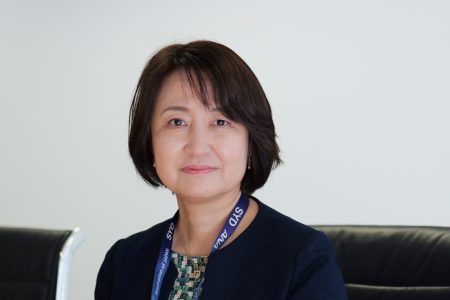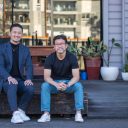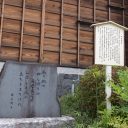
In Conversation Vol.26
In this ongoing series, Yoshinori Sakuno, founder of Japanese cross-cultural marketing company doq®, and currently Chairperson of Nichigo Press, engages in a dialogue with key figures in Australia-Japan relations and business. This time, we welcome Jonathan Briggs, founder of ‘Hyper Island,’ a business school for working adults originating from Sweden, often referred to as the digital version of Harvard University.
(Photography: Riko Mizumura)
PROFILE
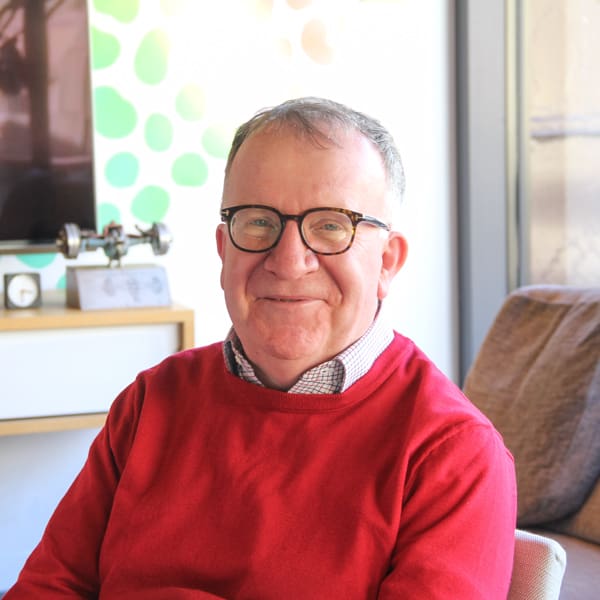
Jonathan Briggs
Briggs founded the Digital Creative Business School ‘Hyper Island’ in Sweden in 1996. He became a professor of e-commerce at Kingston University in 1998. He then moved to Singapore in 2012 and became an honorary professor at Teesside University in 2019, and a professor at the National University of Singapore in 2023. Briggs engages in consulting for major companies including Coca-Cola, focusing on digital transformation, AI, and data.
PROFILE
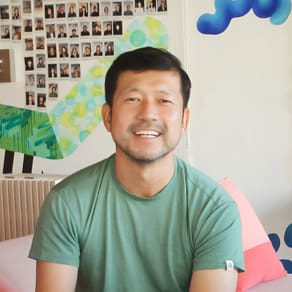
Yoshinori Sakuno
Founder and Group Managing Director of doq®. After gaining experience in the APAC and Western markets at the U.S. advertising agency Leo Burnett, he founded doq® in 2009. He holds an MBA from University of NSW’s AGSM and a Master’s degree in Digital Media Management from Hyper Island Singapore. He was a finalist for the “Ethnic Business Awards” that honour immigrant entrepreneurs and received the 2021 NSW State Export Award for the Creative Industries sector’s Best Company.
Sakuno: Could you tell us about the styles of education and learning support you’ve been involved with so far?
Briggs: Throughout my career supporting education, I’ve been involved with a particular learning style. It involves learning through ‘making, drawing, building, and imagining.’ This learning style turned out to be an excellent platform for the establishment of Hyper Island and continues to be upheld.
Sakuno: What prompted the principles and philosophy behind that learning style?
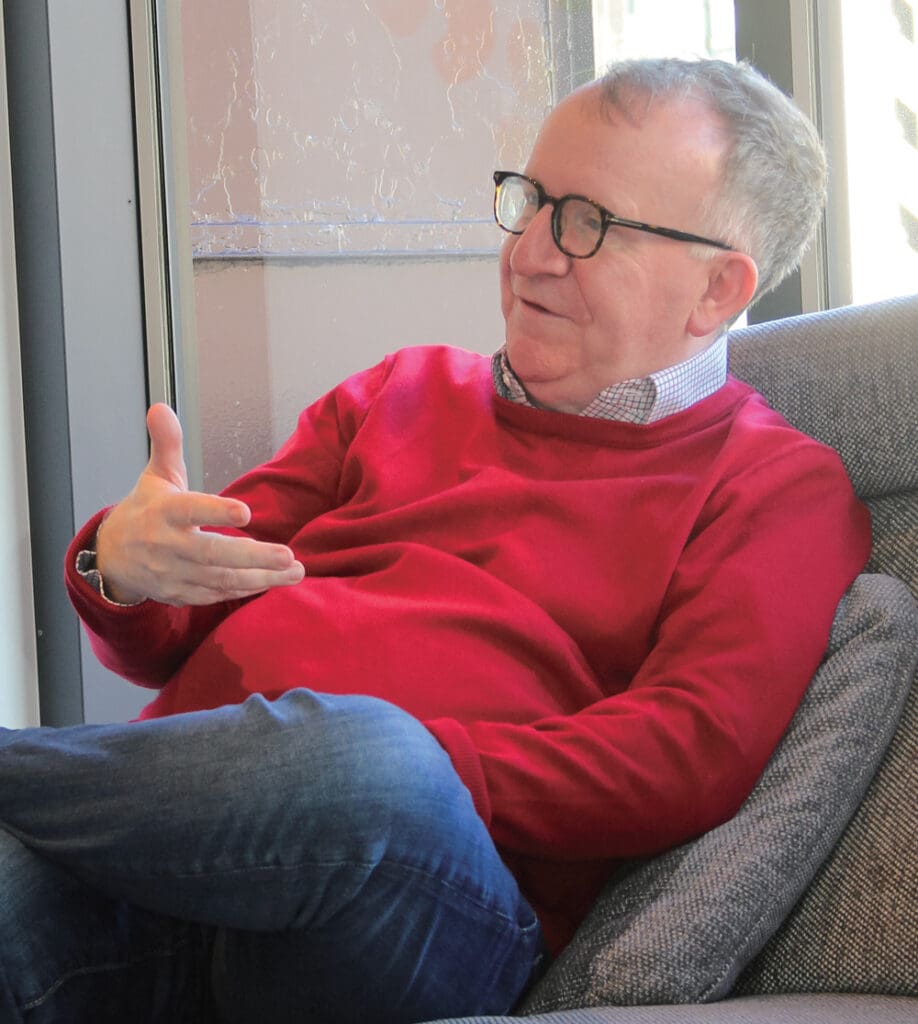
Briggs: There’s an educational philosophy behind it called a ‘constructivist paradigm’ for learning and it’s about how we think children learn. We humans constantly build a picture of the world in our minds during infancy, experiencing and immersing ourselves in it. Then, around the age of 6, formal education begins, and we tend to forget the mechanisms of infancy, with adults instead imparting information to children. Constructivist educators believe that our role isn’t to impart knowledge but rather to facilitate, to create opportunities for learning. Learning takes place inside the learner, and what we need to do is to create magical experiences for people to learn. I’ve always enjoyed this way of learning.
When I started my career as an academic at Kingston University in London, what I tried to encourage was precisely this learning style. I believe it’s particularly useful during times of rapid change. When a question arises, instead of going to find a book that explains it, you need to form groups with people and explore possibilities. 25 years ago, when the web was just starting to become popular, we experienced a period of rapid change, with people getting very excited about everything, including the dot-com boom. But there was also fear. Hyper Island was born exactly at that time. We weren’t experts; we were facilitators who created opportunities for individuals and companies to engage in new things that were happening. I now believe that such opportunities are needed again. We need to carefully design experiences for learners, companies, and individuals to help them make sense of the craziness that surrounds us at the moment.
Learning requires creativity, challenge, and practice

Sakuno: That’s a very radical concept especially from a typical Japanese educational perspective. I grew up in an environment where learning was basically about memorising and getting certain academic scores.What you’re saying, however, is that learning is rather about the experience from trying.
Briggs: That’s right. For example, when learning a language or how to ride a bike, swim, or ski, you can’t learn everything from theory alone. You don’t learn how to swim by sitting indoors and learning it theoretically; you learn it by getting into the water. In many ways, in situations of problem-solving, you learn best by having a go. One thing to note here is that I’m not saying knowledge doesn’t have a role. Books, movies, websites, and various other things all have their roles. But what we need to do is empower people to grab value from them. As an academic, I believe in academic literature. I believe in great storytelling and great TV shows. However, for instance, watching an hour-long documentary about sharks wouldn’t give you enough knowledge about sharks. You may have been entertained and picked up a few facts, but you wouldn’t be prepared to take an examination on sharks. The way to become a shark expert is not just by sitting and listening, but by observing and studying sharks, and possibly working with people in the field of marine biology. It’s about immersing yourself and to build models. And it is in creating a model of complexity where the ‘Aha’ comes in and you suddenly think, ‘Actually, I have mastered this. I have understood it.’ That’s my philosophy.
Further, we must separate learning from teaching. Teaching often happens in situations far from ideal. Often in English, it’s known as the Sage on the Stage. Someone speaks on stage, and if people don’t understand, it’s seen as the listener’s lack of comprehension, and the listeners don’t ask questions. Constructivist learning, that is, Hyper Island’s and my view of learning, emphasises that questions are much more important than speeches. People exhibit creativity and learn through play, experience, practice, and having courage. Practice-based learning is essential for becoming creative. The theory is useful in understanding styles and methods, to copy others, but the fundamental piece is about trying it.
Now is a great time for learners

Sakuno: It’s typical for a teacher to stand on the stage, teach students unilaterally, and for them to learn from there, but your approach is to bring teachers closer to students’ learning journeys, provide them with the support they need, and enhance their learning.
Briggs: Yes, indeed. I think the role of a teacher is to unlock the learning journey. As an educator, I hold up a mirror showing how others think about particular problems or to help find tools that help solve particular problems. We live in an amazing time with fascinating, proliferating number of new tools. It might be a scary time to be a teacher, but it’s a great time to be a learner. What we need is people who can help learners learn. The world is always changing, and with technologies like AI bringing about significant transformations, everyone, whether a 12-year-old child, a 20-year-old youth, or a 50-year-old executive, needs to go back to school and relearn.
Sakuno: Could you explain a bit more about now being a scary time for teachers?
Briggs: Currently, we’re experiencing big social and technological changes, and we don’t know what will happen in the next 20 years. But 25 years ago, when we started Hyper Island, we couldn’t predict what would happen in the next 20 years either. This is a repeating cycle. In times of confusion, with many opportunities and complexities, it’s easy to become authoritarian and fall back on rules. We see this in the political chaos in some regions of the world surrounding us now, where they try to go back to fundamental truths and challenge anything else. That’s why it’s important to provide tools and ways of thinking to make it possible to create the future together.
Supporting the development of facilitators of change

Sakuno: Could you tell us about the projects or initiatives you are currently involved in?
Briggs: The areas I am involved in have both academic and consulting partnership aspects. In terms of academic work, I teach several MBA courses at the National University of Singapore and Nanyang Business School. I primarily support two things: helping MBA students understand business transformation and assisting them in imagining the future. Academic work is about helping people become facilitators of change. I am also a facilitator of change. I work with major fast-food chains in Malaysia, banks in Singapore, and large software companies and service groups. What we are doing is helping people create a better future. It varies from company-wide to departmental to individual levels, but it is common in terms of imagining the future and finding methods, tools, and skills to achieve it. At the individual level, there’s an element of coaching, and at the level of big group leadership, it becomes a program for change, including workshops or interventions. These two elements align well in my work, where I take stories from my practical work and feed them back into my academic work.
Transforming all life events into learning experiences
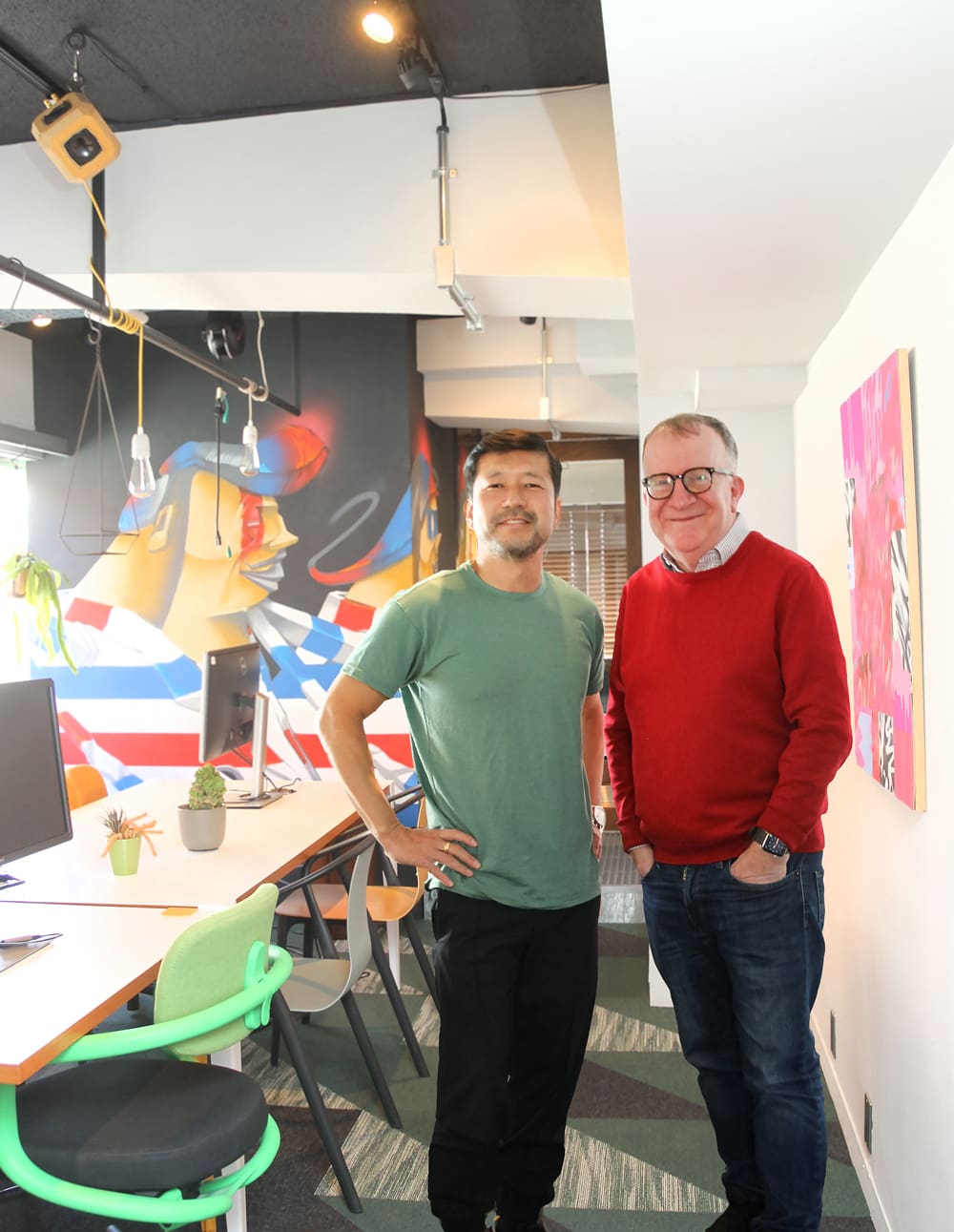
Sakuno: What strategies should one adopt for personal growth and development in their career?
Briggs: I think it starts with discussing lifelong learning. First, we need to detach the concept of ‘completing the learning journey’ from people and break that idea. The reason I enjoy teaching MBA students is because they continue their journey. I wish more people could have opportunities to learn continuously. I’m a great believer in reflective learning, so when working as a team in the office or workplace, whether it’s a good experience or a bad one, I think it’s important to capture what happened. And it’s important to understand what you’ve learned from those particular experiences. To turn all events into learning experiences, we need to create space for reflection within the organisation. For example, we tend to place value on meeting rooms and boardroom tables. Considering typical situations where many people gather for meetings in Asia, only 2 or 3 people speak, and then everyone leaves to return to their work. It makes me think about how little we bring back in terms of the value created in those roles. What we should actually start doing in some form is to think about how to capture value from our actions beyond the obvious.
Sakuno: What advice would you give to someone starting their career in a new field?
Briggs: I think it’s ‘taking good notes.’ Whenever an idea comes to mind, write it down. I keep thousands of notes, and I think that’s a good thing. And ‘asking lots of questions.’ Don’t accept things at face value; if something puzzles you, write it down and revisit it later to understand what was happening. It’s also important to recognise the power of others and to ask them many questions. Don’t be afraid to ask silly questions. You may feel too young to ask your boss questions, or too old to ask younger people questions. People tend to spend their whole lives not knowing that it’s okay to ask questions, but everyone has the same fears and face the same challenges. Also, it’s always important to stay up to date with the latest information. Keep an eye on what’s happening in music, fashion, language, and the world, and especially pay attention to what’s happening in digital realms. Rather than just observing advancements and transformations in digital and technology from a distance, have a go and get involved with it.
Sakuno: Many people may not be proficient in using notes, so could you explain your method of taking notes, and the benefits of taking them?
Briggs: I take various kinds of notes. I use blank paper, or I usually jot down questions on my cell phone. And later, when I take some time to reflect, I try to answer those questions myself. I love making lists. Lists are an amazing way of expanding your options, so when I’m thinking about something, I write down 2 or 3 things and consider practicing it later. Try expanding that to 10, and then to 20. The mental habit of expanding your options and thinking ‘Let’s make a long list of things’ is a good idea. Taking notes is part of the reflective practice, particularly when dealing with something very complicated. I sometimes try to draw a picture of the situation. I use various diagramming techniques, but sometimes I try to understand something using just one slide. They are incredibly useful.
Sakuno: I’ll take your advice. Thank you very much.
(26 February, in Tokyo)

